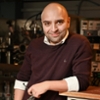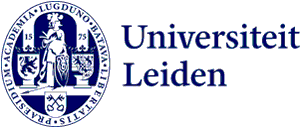26 search results for “superconductivity” in the Public website
-
Inducing spin triplet superconductivity in a ferromagnet
Promotor: J. Aarts
-
On electronic signatures of topological superconductivity
Promotor: Prof.dr. C.W.J. Beenakker
-
The physics of nanowire superconducting single-photon detectors
Promotores: Prof.dr. D. Bouwmeester, Prof.dr. A. Fiore (TU Eindhoven)
-
The holographic glass bead game: from superconductivity to time machines
Promotores: Prof.dr. J. Zaanen & Prof.dr. K.E. Schalm
-
side-band cooling of a trampoline resonator and the effect of superconductivity on the Casimir force
This thesis consists of two subjects, that are both a consequence of radiation pressure.
-
Disorder and interactions in high-temperature superconductors
This thesis is devoted to an in-depth examination of the various effects of disorder in the cuprate high-temperature superconductors.
-
 Kaveh Lahabi
Kaveh LahabiScience
lahabi@physics.leidenuniv.nl | +31 71 527 5603
-
Paradox in superconductivity at high temperature
Nature publishes an article on a paradoxical discovery in superconductivity. Physicists are searching for superconductivity at high temperatures so that less cooling is needed in for example MRI machines. News & Views article by Prof. Jan Zaanen in the same issue of August 19th.
-
New memory developed for superconducting computer
If computers work on superconducting current, they won’t consume any energy. Leiden physicists have now gained control over a new type of superconducting memory elements. Publication in Nature Communications.
-
Spin-triplet supercurrents of odd and even parity in nanostructured devices
Triplet superconductivity refers to a condensate of equal-spin Cooper pairs (pairs of electrons with equal spin).
-
Theorie van fermion-pariteit-omkeringen in supergeleiders
Majorana meets a mermaid
-
Raindrops on the roof-technique reveals new quantum liquid
Koen Bastiaans and his colleagues discovered a new quantum liquid unlike anything ever seen. They did it by using a technique that can be compared to listening to the sound of raindrops falling on a roof. Publication in Science 29 October.
-
Jan Aarts receives FOM Projectruimte Grant
Experimental physicist Jan Aarts has received a FOM Projectruimte grant of 545,000 euro. He will use the budget to study the interaction between superconducting currents and ferromagnetism. In the future, this might lead to computer memory with negligible energy consumption.
-
Pinching holes to create superconductors
In their quest for materials that conduct electricity without resistance at moderate temperatures, scientists usually work on their chemical make-up. Now Leiden physicists have come up with a radically new approach: pinching holes in a periodic pattern. Publication in SciPost.
-
Josephson and noise scanning tunneling microscopy on conventional, unconventional and disordered superconductors
In this thesis we use Josephson and noise scanning tunneling microscopy for the study of conventional, unconventional (iron-based) and disordered superconductors. On the one hand, Josephson scanning tunneling microscopy allows us to directly visualize the superfluid density with high spatial resolut…
-
Quantum Matter and Optics
Research groups in the Quantum Matter & Optics programme investigate electronic properties of matter and light-matter interactions with emphasis on quantum information.
-
Record distance for alternative super current
Electrons that spin synchronously around their axis, turn out to stay superconducting across large distances within magnetic chromium dioxide. Electric current from these electrons can flip small magnets, and its superconducting version could form the basis for a hard drive without energy loss. Publication…
-
Collaboration group Aarts and Intel
Physics professor Jan Aarts starts a collaboration with chip manufacturer Intel to perform fundamental research in low-power, cryogenic computing.
-
Melting of frozen electrons visualized
For the first time, physicists have visualized the ‘melting’ of electrons inside a special class of insulators. It allows electrons to move freely and turns the insulator into a metal and possibly later into a superconductor. Publication in Nature Physics.
-
Solution to distortion effect STM scanning
STM scanning experiments on poorly conducting materials are challenging, and can cause a distortion effect. A new model corrects for this effect, allowing physicists to better study materials in their quest to understand unconventional superconductivity. Publication in Physical Review B as Editor’s…
-
Frost for sale!
Liquid nitrogen, frozen fruit and levitating market-goers. On Friday 8 April, visitors to the weekly market in the Merenwijk district were exposed to superconductivity. What is it exactly? And what does it look like? Young and old were impressed by the experiments demonstrated by Leiden students from…
-
Three FOM-Projectruimte Grants for Leiden Physics
The Leiden Institute of Physics has been awarded three out of twelve available grants from the FOM Projectruimte. Principal Investigators Milan Allan, Stefan Semrau and Carlo Beenakker all receive around 400,000 euro for their research.
-
Spinoza prize for Jan Zaanen
Jan Zaanen, Professor in Theoretical Physics of condensed material, has been awarded a Spinoza prize. His pioneering ideas about the collective behaviour of quantum particles and high temperature superconductivity have often given him the reputation of being something of a rebel.
-
Physical reality of string theory demonstrated
String theory has come under fire in recent years. Promises have been made that have not been lived up to. Leiden theoretical physicists have now for the first time used string theory to describe a physical phenomenon. Their discovery has been reported this week in 'Science'.
-
Black holes with ‘dreadlocks’ offer insight into quantum matter
Physicists understand little about quantum matter, which is a building block of future quantum computers. Theorists have now discovered that black holes with ‘dreadlocks’ harbor a similarly exotic order pattern, which makes calculations on quantum matter easier. Publication in Physical Review Letter…
-
Research and current affairs: 2022 in six stories
Life returned to something resembling normal after Covid but other crises soon took its place. These great challenges are also being felt at the University and our researchers are working on solutions. The nitrogen crisis, problems with young people’s services and an increasingly urgent climate crisis:…
